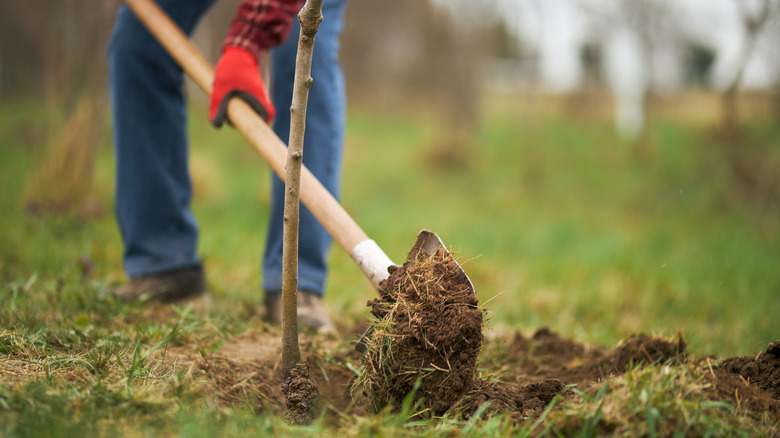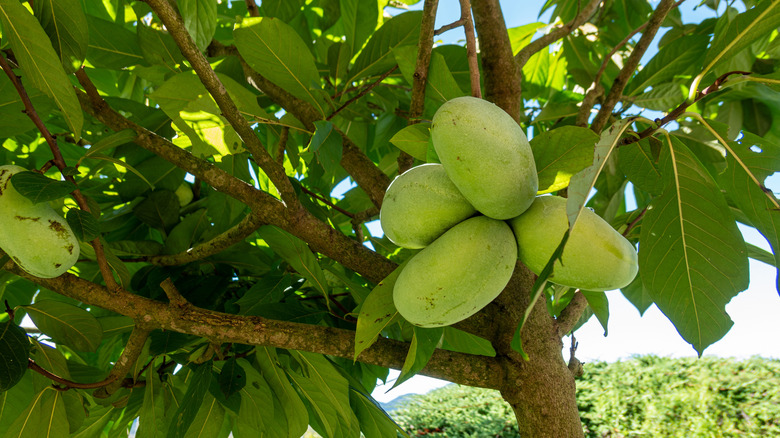The One Fruit Tree You Should Be Planting In The Fall
Did you know that a tropical-tasting fruit can grow as far north as Michigan? Pawpaws (Asimina triloba) are an old-fashioned tree that produces fruit that's so tasty, you have to wonder why growing them isn't more popular. Ask an older American about pawpaws, and you're likely to hear drool-worthy stories of summer snacks straight from the branch. Pawpaws are native to North America and are hardy in USDA Hardiness Zones 4 to 9. These unique fruit trees do well in such a wide range of climates due to their preference for humid, hot summers paired with a good winter chill. Get a couple of pawpaw trees planted this fall, and you could be sinking your teeth into the mango-banana-flavored flesh before long.
Fall is the perfect time to start a pawpaw from seed, since it needs a period of cold to germinate. However, this is a long, long process that has seedlings emerging many months later, between late July and late August. Plus, pawpaw seeds need a period of cold stratification up to 100 days, which might not occur in some of the southernmost points where the trees will survive. Luckily, it's possible to order nursery-grown grafted tree varieties that are best suited for your area. In addition to shortening the wait time for fruit, grafted pawpaws are more reliable for producing high-quality fruit than seeds or saplings. Baby pawpaw trees are dormant in the fall, so they are equally appropriate for planting this season as are their seeds.
How to plant pawpaws this fall for delicious fruit
Ready to plant a pawpaw tree? If you want to taste their delectable fruit, plant at least two trees for cross-pollination. For the patient nature lovers going the seed-planting route, be sure to plant many more seeds than the number of trees you want, so you'll have a better chance of ending up with a healthy pair. Patience is a must, no matter how you grow your pawpaw, since it takes upwards of four years for pawpaw trees to bear fruit after planting. But the long wait will be well-rewarded; plants can produce as much as 50 pounds of fruit per tree annually!
Though they can grow in shade, pawpaws are sun-loving trees that benefit from some protection from wind. Plant your trees in a spot with well-draining soil that's fertile and slightly acidic. Mature trees grow up to 25 feet high, so give them enough space to branch out without too much shade. Space your trees about 8 to 15 feet apart, and give them a thorough watering right after planting. They'll need regular watering for their first two years to become established. Younger trees may need a bit of temporary shade while they're settling in, because pawpaws are susceptible to transplant shock in bright sun.
Treating your trees to regular doses of balanced fertilizer during the first part of each growing season may speed up their productivity. Along with regular watering, surround your pawpaws' bases with 6 to 8 inches of mulch to retain moisture and keep weeds at bay. Once the lovely deep purple blossoms unfurl in the spring, your pawpaw tree is sure to attract zebra butterflies along with many an admiring human eye.

